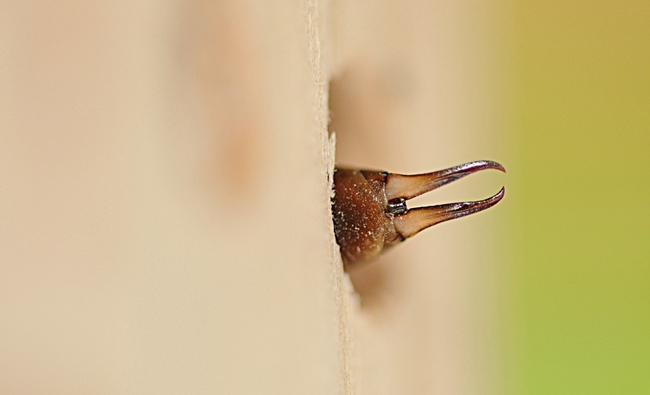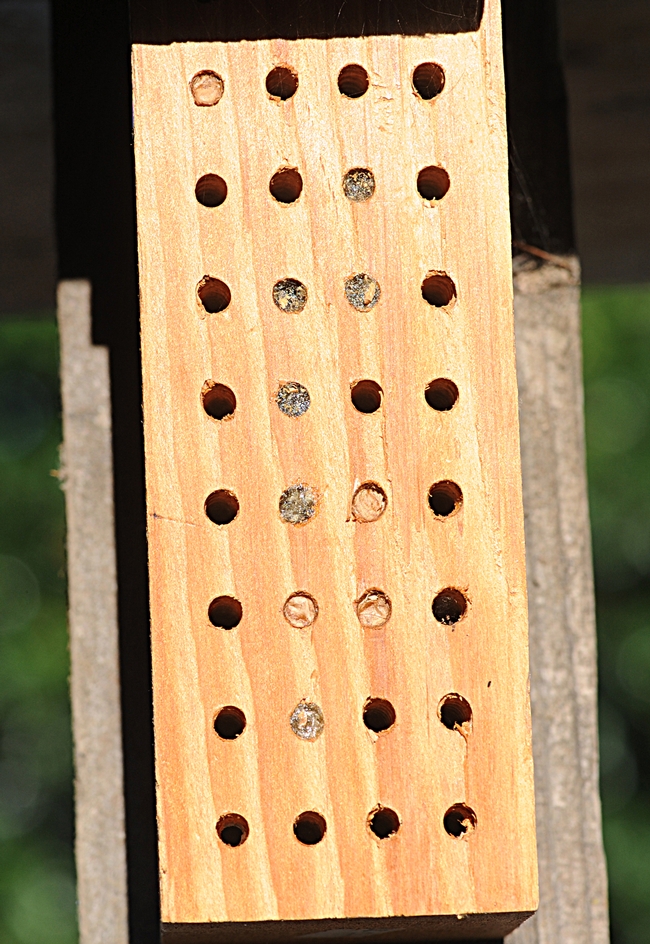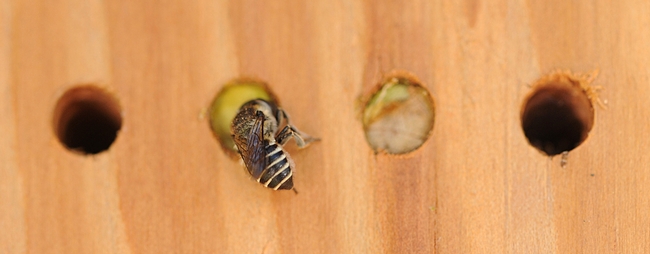When you install bee condos--those wooden blocks with holes drilled in them to attract nesting native bees--sometimes you get the unexpected.
Like earwigs!
Home invasion! Home invasion!
We installed two bee condos, each about the size of a brick, in our yard. One is for leafcutting bees (genus Megachile) and is filled quite nicely, thank you, with 10 tenants. Another, with larger holes, is for blue orchard bees (BOBs, genus Osmia). Despite our "vacancy" sign (discounted rates, free WiFi, free continental breakfasts), nothing is occupying it except earwigs.
Earwigs! We're wigged out.
They were especially persistent in the damp weather.
Native bee guru Robbin Thorp, a native pollinator specialist and emeritus professor of entomology at the University of California, Davis, who has researched native bee holes with colleagues John Barthell and Gordon Frankie, told us: "We found that mostly wasps and earwigs occupied the largest holes. Only a few of the introduced leafcutting bees that could not find appropriate size holes when bee populations were abnormally high would make aberrant nests in the larger cavities. By 1990, we scaled back to the three diameters that our bees use: 4.5, 6.5 and 8 mm (3/16, 1/4, and 5/16 inch) for our studies in California."
The earwigs, Thorp says, "are not so likely to be present now that the weather is hot and dry, but in shady, damp, cool areas, and especially early in the year when it is wet and cool, they can be a problem."
Their research, published in Environmental Entomology in 1998 and titled “Invader Effects in a Community of Cavity Nesting Megachilid Bees (Hymenoptera: Megachilidae)” involved native bee species and their introduced competitors.
Like earwigs.
In their paper, they wrote that the European earwig (Forficttla auricularia L) from Eurasia and northern Africa, was introduced into North America at the turn of the century. "It has invaded most counties in the state of California since its apparent introduction in the late 1910s (Essig 1923, Langston and Powel! 1975)," they wrote. "Its populations have grown to high numbers in natural areas, especially in riparian zones where humidity levels are relatively high (Barthel! and Stone 1995). The earwig is most active during evening hours, climbing into tree crowns to scavenge and hunt but hiding in cracks, crevices, or holes during the daylight hours."
Active indeed. Those European earwigs soon found our condo for BOBs (which perhaps should now mean Big ol' Blast).
Attached Images:

Earwig inside a blue orchard bee condo, which has larger holes than one for leafcutting bees. (Photo by Kathy Keatley Garvey)

This bee condo for leafcutting bees has 10 tenants. It is about the size of a brick and has smaller holes than a bee block for blue orchard bees. (Photo by Kathy Keatley Garvey)

Leafcutting bee provisioning her nest. (Photo by Kathy Keatley Garvey)